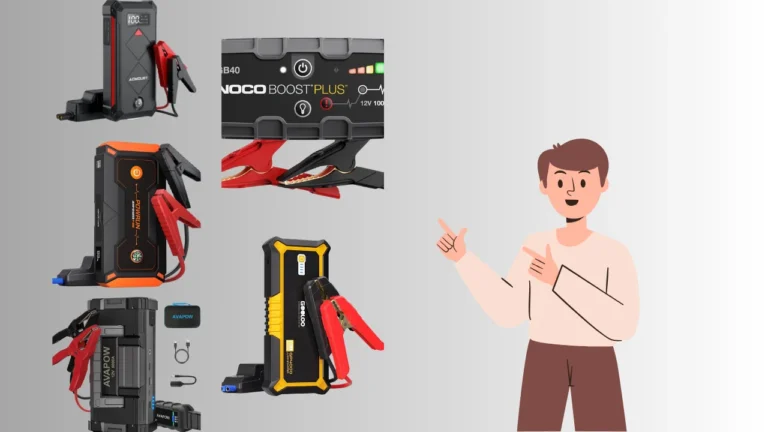Knowing how to jump start motorcycle battery issues is necessary for any rider. When you’re far from home, and that battery fails, it’s helpful to know that about 65% of dead batteries can be revived with a jump start. This quick method can save you time, especially if you’re on a long ride. Find out if a hybrid can jump start a normal car and understand the mechanics behind it.
Dead motorcycle batteries are a common issue, especially if your bike sits idle for over two weeks. In just a few minutes and with the right equipment, you can get back on the road. Let’s explore simple, safe ways to revive your battery when you need it most.
Quick Look
To jump-start a motorcycle battery, first, connect jumper cables: red to the positive terminal and black to the metal ground on the bike. Use a portable jump starter or another vehicle battery, then start the motorcycle. Let it run for 15-20 minutes to recharge fully.
What’s the difference between jump-starting with a motorcycle versus a car battery?
Jump-starting with a motorcycle battery versus a car battery mainly differs in power output. Car batteries are typically more powerful, often delivering a higher voltage and current than motorcycle batteries.
While both use 12-volt systems, connecting a car battery directly to a motorcycle can risk overloading the smaller motorcycle battery. To safely jump-start with a car, ensure the car’s engine is off to avoid excess current.
Connect cables carefully—positive to positive, negative to an unpainted metal surface on the motorcycle. Using a car battery works, but follow these precautions to prevent potential battery damage to your motorcycle. Follow our guide on how to jump start a car with a portable battery for easy, step-by-step instructions.
Materials Needed
Before jump-starting your motorcycle battery, gather a few essential items to make the process quick and safe. These materials ensure you’re fully prepared for the task.
- Jumper cables: Standard 4-gauge, around 10 feet long, for optimal reach and power transfer.
- Portable jump starter: Compact (about 2-3 pounds) and easy to use, ideal for emergencies.
- Protective gear: Gloves and safety glasses for safe handling.
- Compatible vehicle: Another motorcycle or car with a 12-volt system, if available.
- Wrench: Small (typically 10mm) to access battery terminals if necessary.
How to Jump Start Motorcycle Battery | Best Method
Here are four practical methods for jump-starting your motorcycle battery, each suited to different situations. I’ll give a quick intro for each, followed by clear, step-by-step instructions. These methods can save you valuable time when a dead battery catches you off guard.
Using a Portable Jump Starter
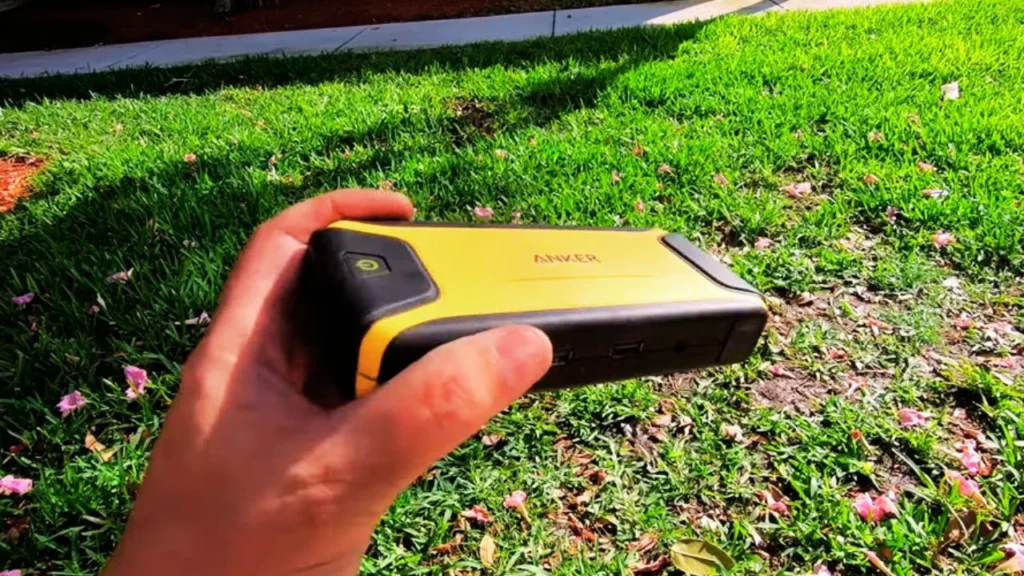
Portable jump starters are compact and easy to use, making them a popular choice. These devices provide an immediate power boost and are incredibly handy for quick starts on the go.
Step 1: Attach the red (positive) clamp to your battery’s positive terminal.
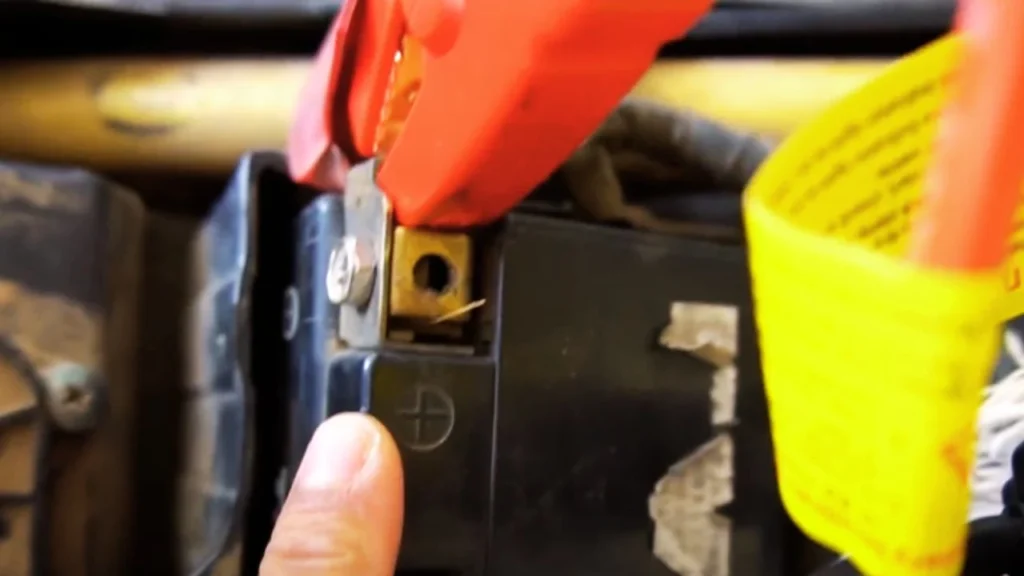
Step 2: Attach the black (negative) to your battery,s negative terminal.
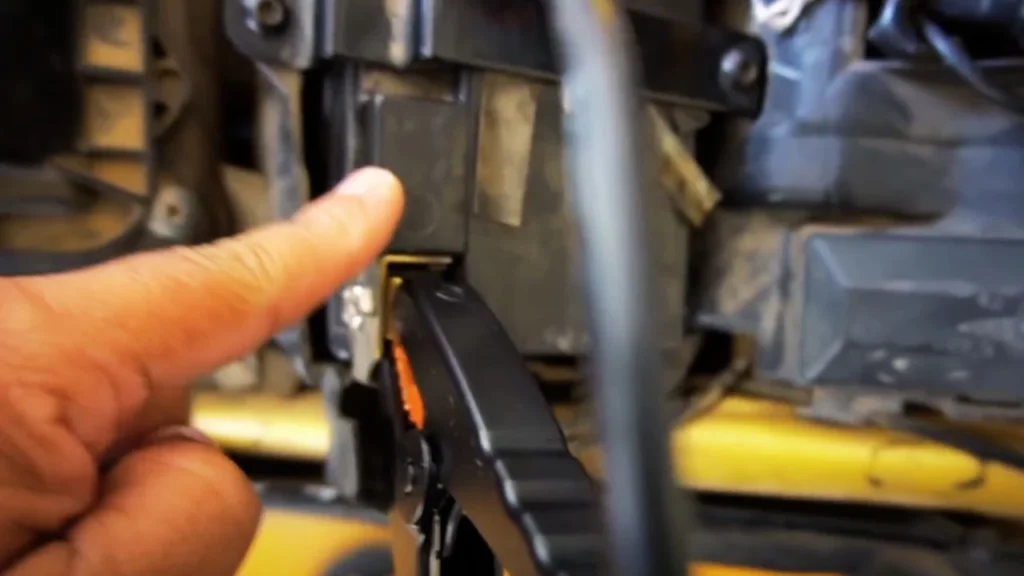
Step 3: Power on the jump starter device and ensure it’s ready to deliver a charge.

Step 4: Attempt to start your motorcycle. If successful, let it idle for a moment.
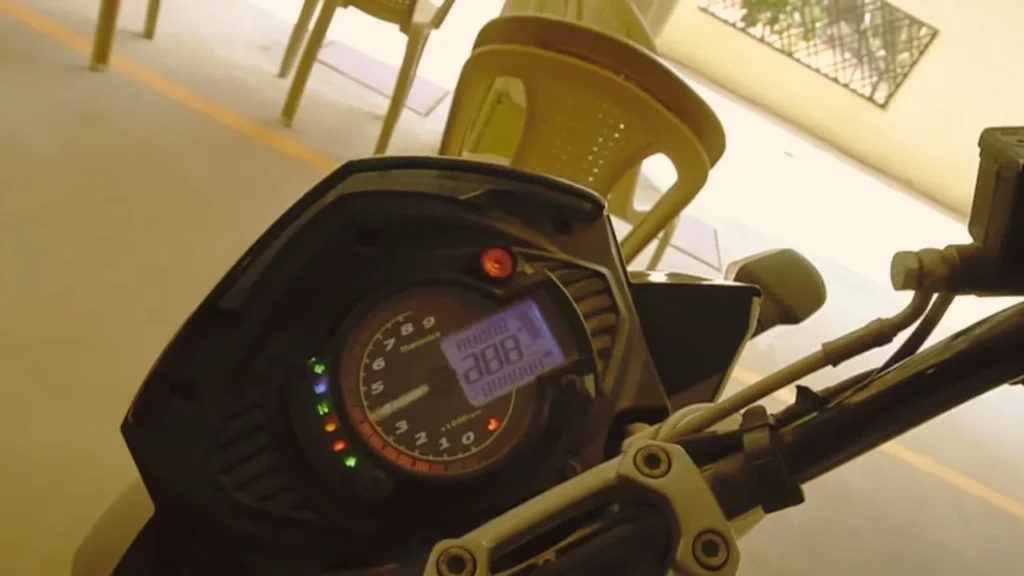
Step 5: Turn off the jump starter and remove the clamps in reverse order to avoid sparks.

- Using Another Motorcycle

When a portable starter isn’t available, another motorcycle can lend a hand. This method is efficient and takes about 5-10 minutes from setup to start.
Step 1: Connect the red (positive) clamp to the positive terminal of the dead battery.

Step 2: Place the other end of the red clamp on the positive terminal of the working motorcycle’s battery.
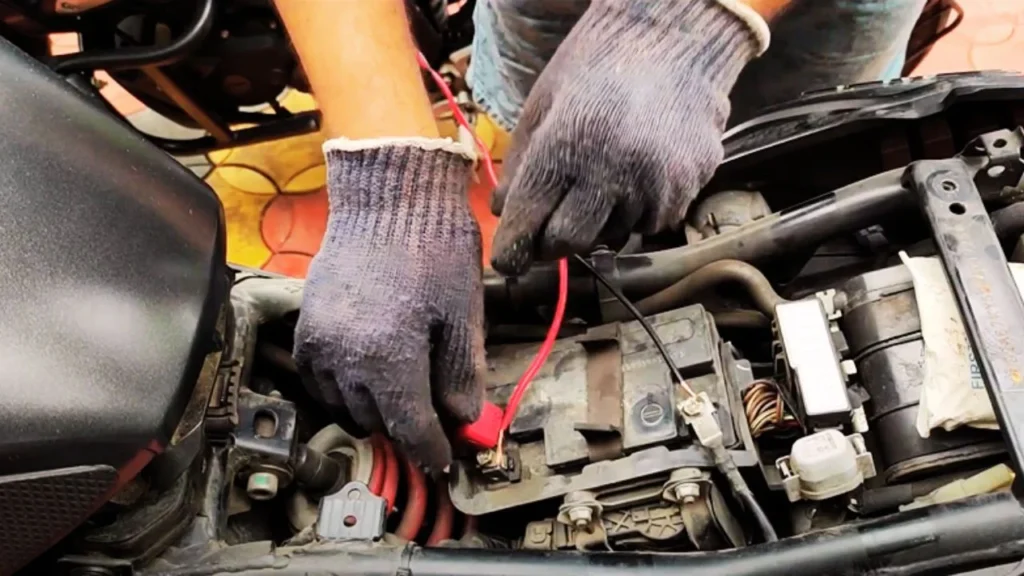
Step 3: Attach the black (negative) clamp to the negative terminal of the working battery.
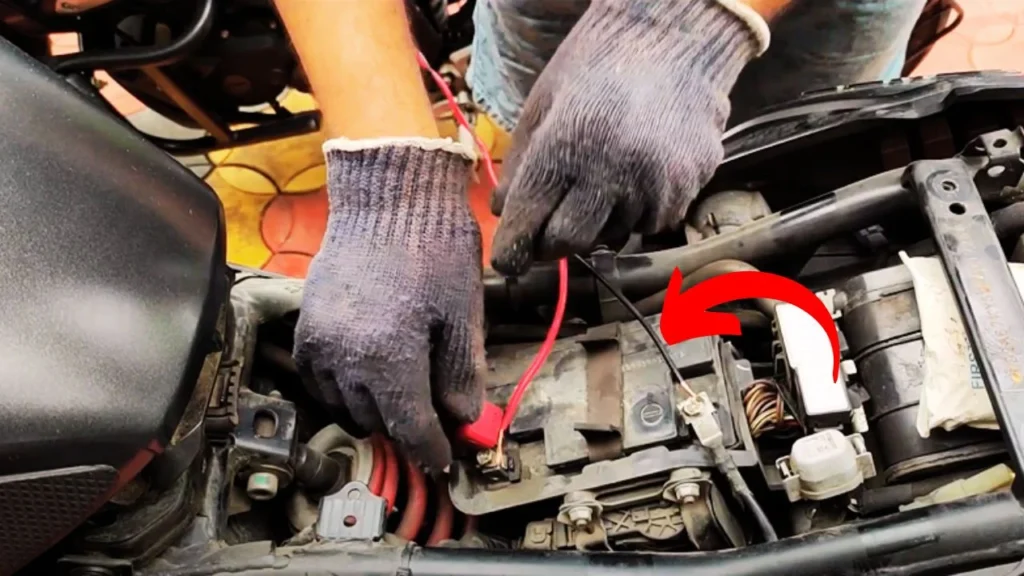
Step 4: Connect the other end of the black clamp to an unpainted metal surface on the dead motorcycle.
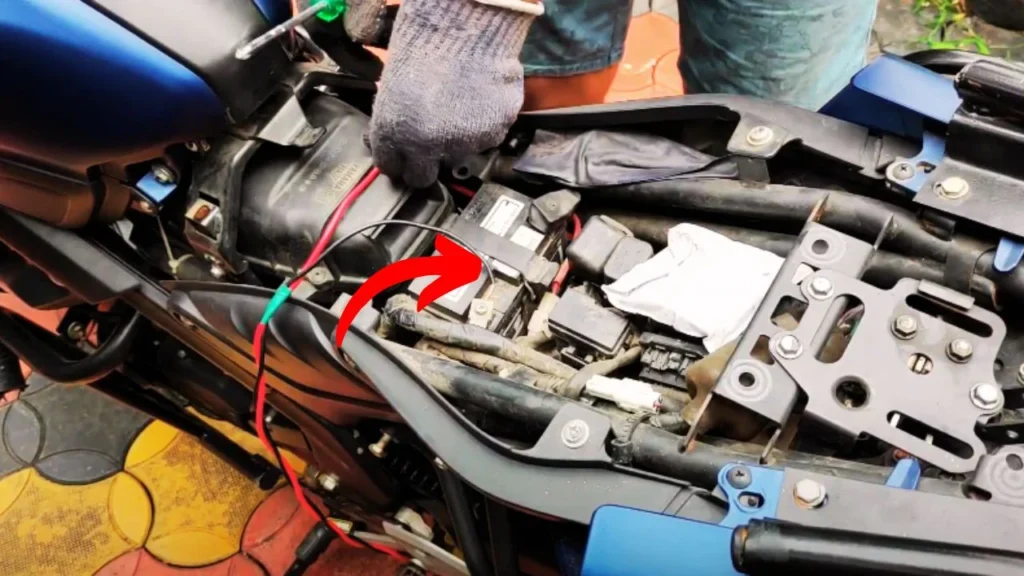
Step 5: Start the motorcycle with the good battery and let it run for about 5 minutes to charge the dead battery.

Step 6: Attempt to start the dead motorcycle. If it starts, let it idle for a bit.
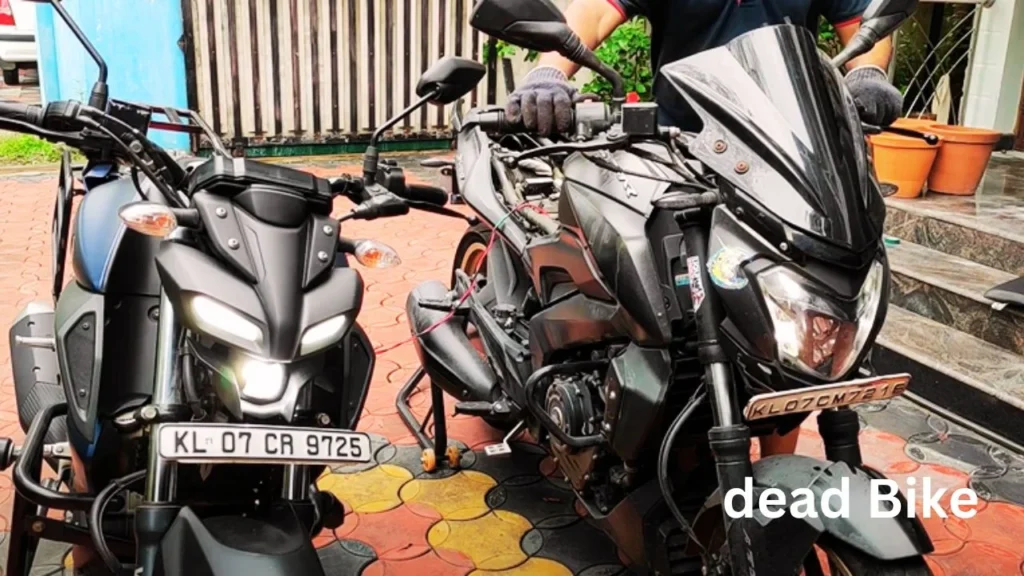
Step 7: Carefully remove the clamps in reverse order to complete the jump start.
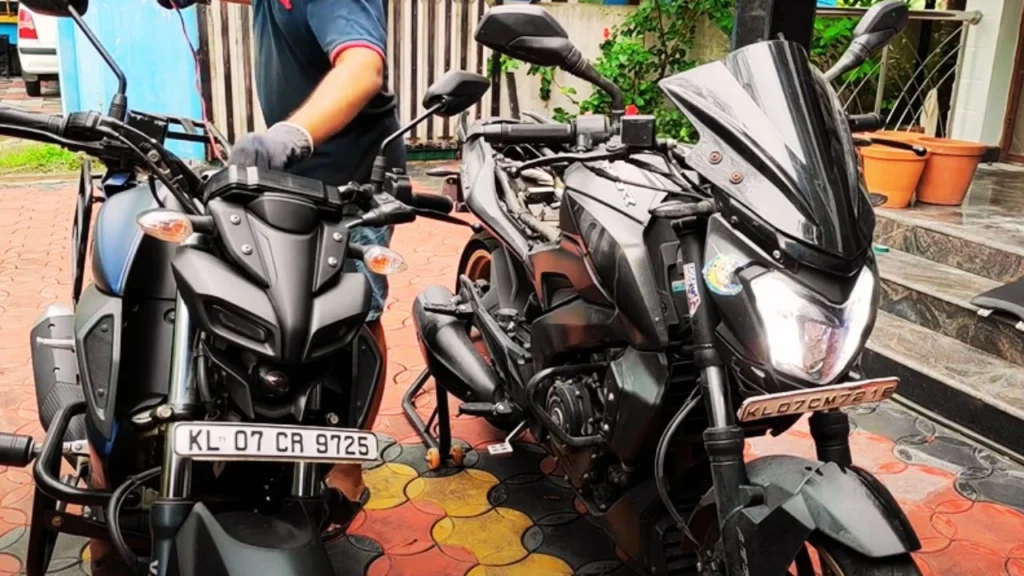
- Using a Car Battery
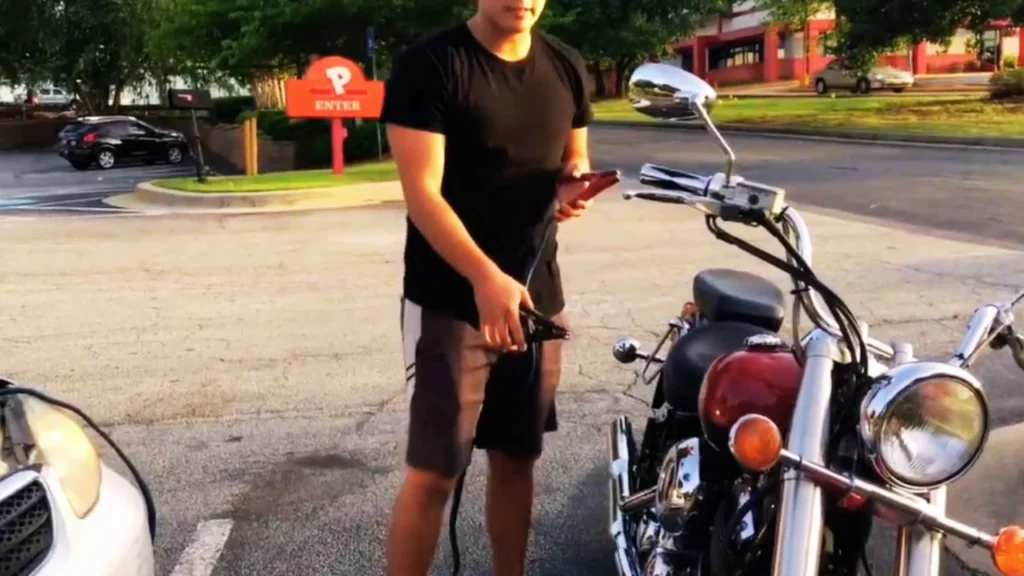
You can also use a car to jump-start your motorcycle, but make sure both vehicles have a 12-volt battery. This method is ideal when a car is readily available.
Step 1: Attach the red (positive) clamp to the positive terminal on the motorcycle battery.
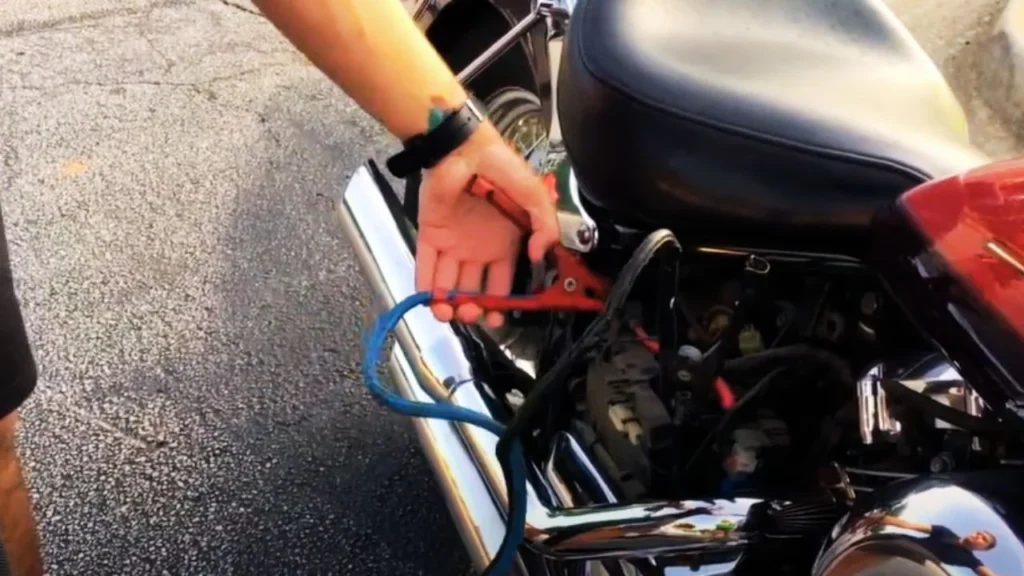
Step 2: Connect the other end of the red clamp to the positive terminal of the car battery.
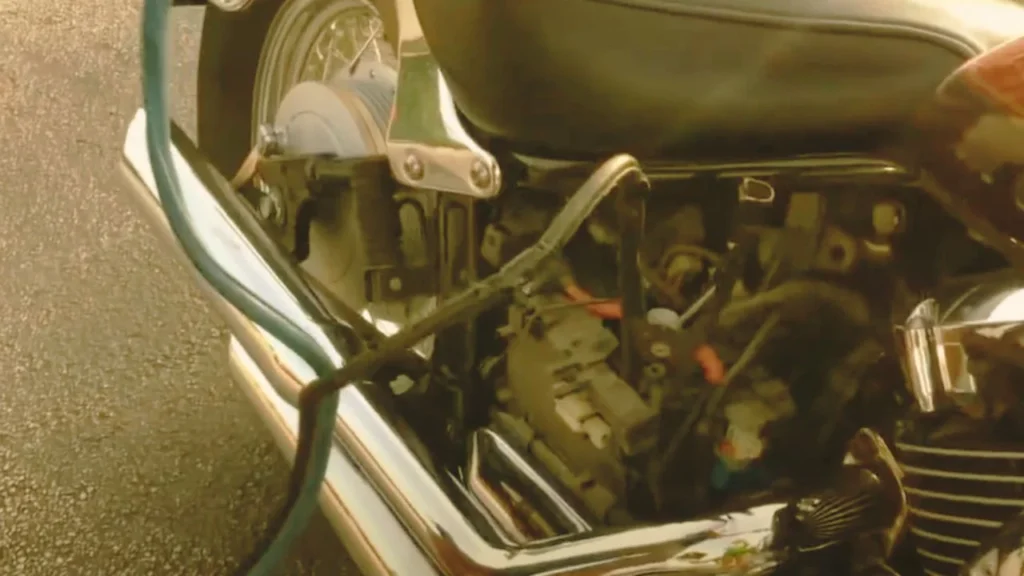
Step 3: Place the black (negative) clamp on the car battery’s negative terminal.
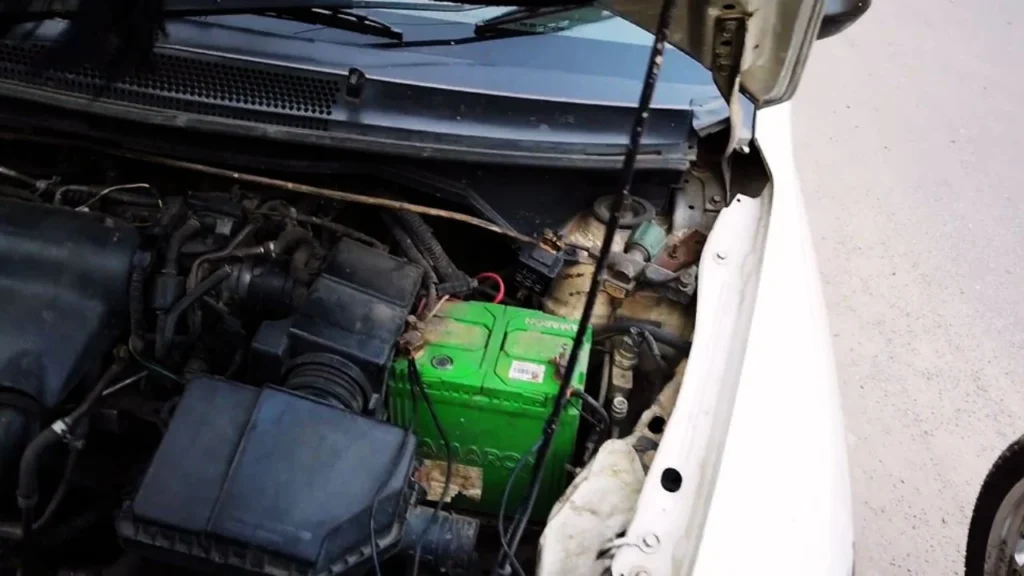
Step 4: Attach the other end of the black clamp to an unpainted metal surface on the motorcycle.

Step 5: Turn on the car engine and let it idle for a few minutes to charge the motorcycle battery.
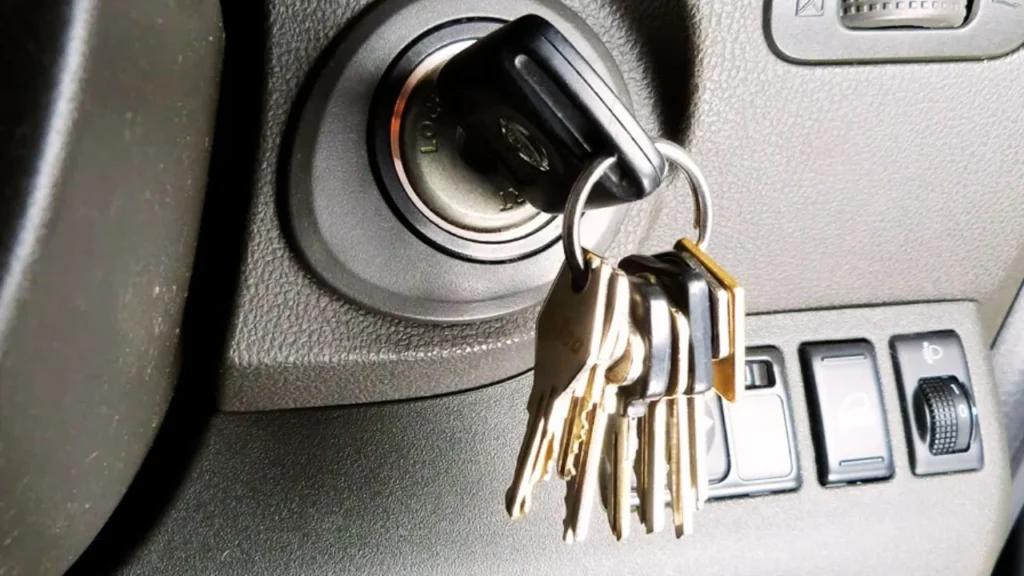
Step 6: Attempt to start your motorcycle. If successful, let it idle before riding.
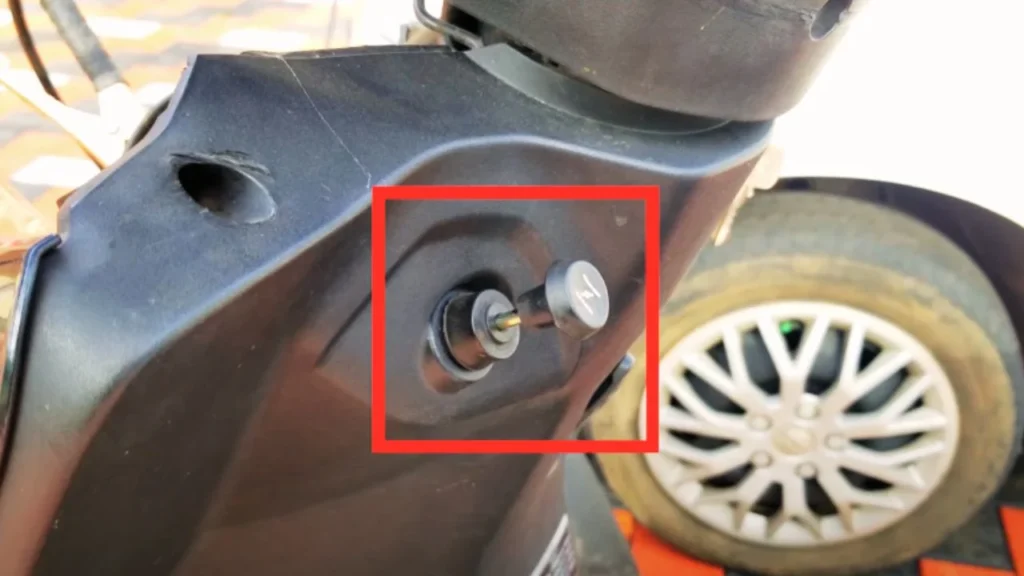
Step 7: Remove the clamps in reverse order and turn off the car.

- Push Starting (Bump Starting)
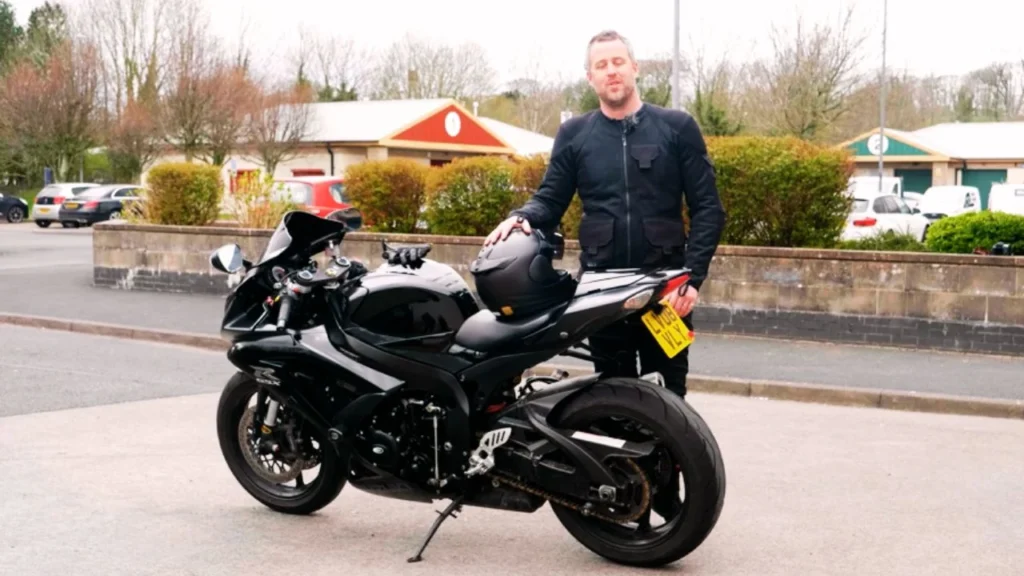
Push starting is a manual way to jump-start your bike if you’re alone or without tools. This method works best on level ground or a slight incline.
Step 1: Make sure the ignition is on, and set the kill switch to “run.”
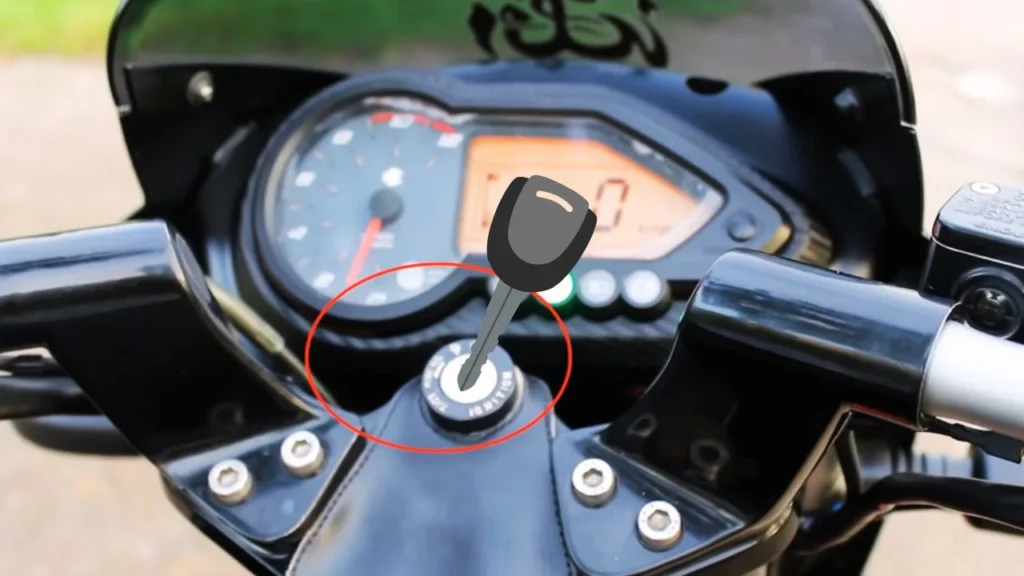
Step 2: Engage the second gear to give a smoother start and reduce jerkiness.

Step 3: Hold the clutch in and start pushing the motorcycle until you build up some speed.
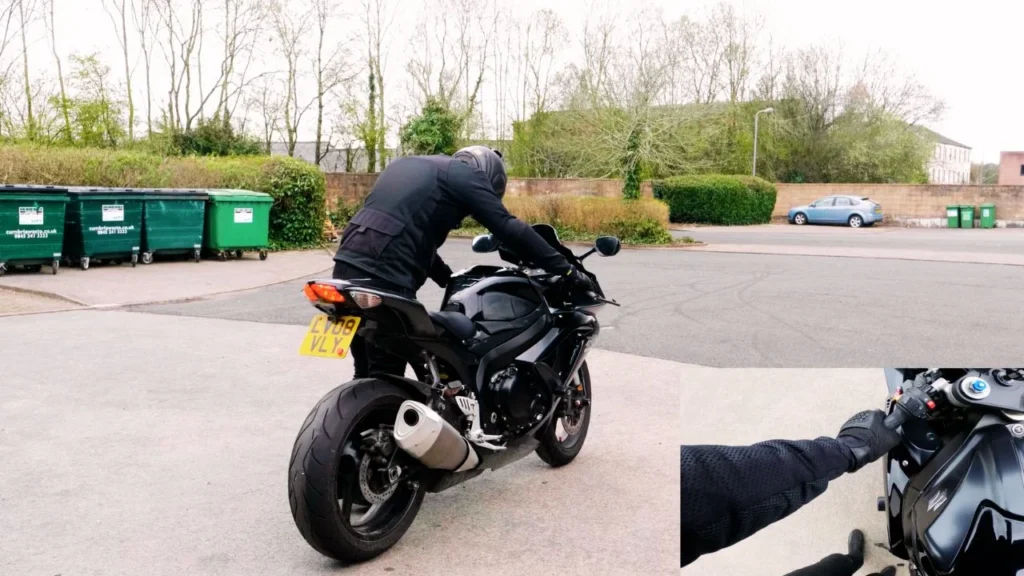
Step 4: Once you have momentum, release the clutch abruptly to engage the engine.
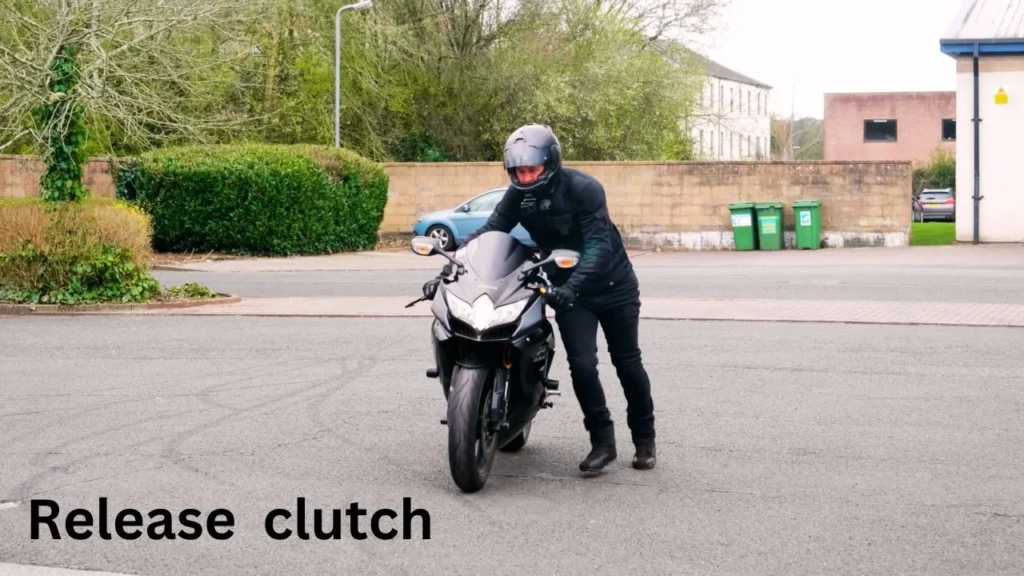
Step 5: If the engine starts, quickly pull in the clutch again to avoid stalling, and let it idle.
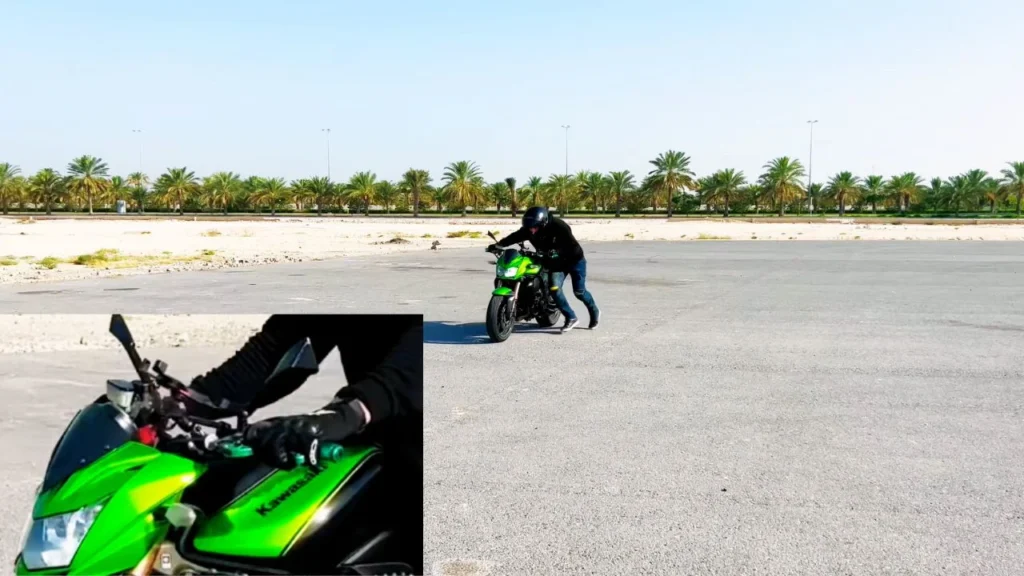
Post Jump-Start Actions
After jump-starting your motorcycle, let it run for at least 15 to 20 minutes. This helps recharge the battery, giving it a boost for the next start. If you notice the battery doesn’t seem to hold the charge, it may be a sign of a deeper issue.
Monitor the battery’s performance over the next few rides. Check if it maintains power or drains faster than usual. Generally, a motorcycle battery should last between 2 to 5 years, but consistent draining can mean it’s time for a replacement.
Lastly, take a moment to inspect the charging system. A healthy system charges around 13.5 to 14.5 volts while the engine is running. If the voltage is lower, consider checking with a mechanic, as it could prevent future battery issues. Learn whether you can jump start a car with a bad alternator and what alternatives you have.
Preventive Measures
To avoid getting stuck with a dead battery, a few simple steps can make all the difference.
- Regularly check your battery’s charge every three months, especially if you ride less frequently.
- Investing in a battery tender is another wise step, particularly if you’re parking your motorcycle for extended periods. These tenders provide a steady trickle charge.
- Corrosion on battery terminals is a silent issue that can cause unexpected battery failures. Cleaning the terminals every six months with a simple brush keeps them in good shape. A little maintenance saves both money and unexpected repair days.
Carry a Portable Jump Starter
Lastly, consider carrying a portable jump starter, especially for long trips or touring. Most portable jump starters are compact, fitting in a small bag, and weigh around 1 to 2 pounds. This little device can be a lifesaver if you’re miles away from help.
Do I need a special jump starter for motorcycles?
No, you don’t need a special jump starter for motorcycles, but a compact, lower-amperage model is ideal. Standard car jump starters can work, but ensure they support 12 volts to match your motorcycle battery. Portable jump starters designed for motorcycles offer the safest, most convenient option for regular use.
Safety Guide for Jump-Starting a Motorcycle Battery
Jump-starting a motorcycle battery can be a safe and efficient process when proper precautions are taken. Here are essential safety tips to follow for a secure jump-start.
- Inspect for Damage: Before starting, ensure the battery has no cracks, leaks, or severe corrosion, which can make jump-starting unsafe.
- Wear Protective Gear: Use gloves and safety goggles to guard against potential sparks and exposure to battery acid.
- Mind Your Surroundings: Always jump-start in a well-ventilated, open space to avoid the buildup of explosive hydrogen gas.
- Keep Flammable Items Away: Avoid smoking, and keep any flammable materials far from the jump-start area.
- Use Correct Connections: Attach cables properly—red (positive) cable to the positive terminal, black (ground) cable to an unpainted metal surface on the motorcycle, not the battery terminal, to reduce sparking.
- Disconnect Safely: When finished, disconnect the cables in reverse order—black first, then red—to minimize spark risk.
- Allow Time to Recharge: After a successful jump-start, let the motorcycle idle for at least 15-20 minutes to stabilize the battery’s charge.
Wrap Up
Jump-starting a motorcycle battery can be surprisingly easy once you know the steps. With just a few items on hand, you’re set for success. From using a jump starter to push-starting, each method gets you going fast!
Keeping this knowledge handy, especially on long trips, is essential. So next time you need to know how to jump start a motorcycle battery, remember this guide—it’s your ticket to a quick start in under 20 minutes! Explore the best compact jump starter for convenient and reliable vehicle assistance.
Ali is a tech enthusiast and automotive aficionado, passionate about sharing insights on the latest innovations and industry trends.

